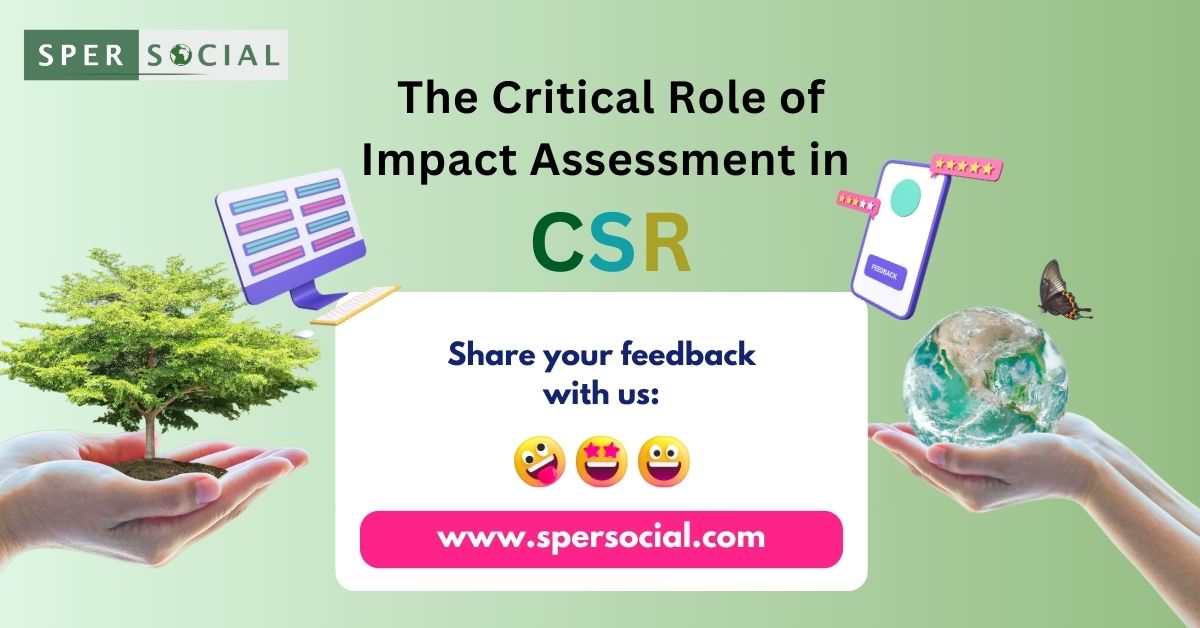
Corporate Social Responsibility (CSR) has become a vital element of the business world. Companies of all sizes increasingly recognize the importance of giving back to society and the environment. However, it’s not just about doing good; it’s also about measuring how good you are doing. This is where impact assessment comes in. Let's dive into why impact assessment is critical in CSR, with some real-world examples to illustrate its importance.
Why is Impact Assessment Important in CSR?
- Accountability and Transparency - Impact assessment helps companies to be accountable and transparent about their CSR activities. It shows stakeholders that the company is genuinely committed to its CSR initiatives and not just doing it for publicity. Example: - Unilever, a multinational corporation, publishes its Sustainable Living Plan results annually. This detailed report highlights their progress in reducing environmental impact and improving health and well-being. By assessing and sharing their impact, Unilever demonstrates transparency and accountability.
- Measuring Effectiveness - It is crucial to know whether the CSR activities are making a real difference. Impact assessments provide data on the effectiveness of these initiatives, allowing companies to understand what works and what doesn’t. Example: Coca-Cola’s 5by20 program aimed to empower 5 million women entrepreneurs by 2020. Through impact assessments, Coca-Cola tracked the number of women reached and the economic benefits they gained, ensuring the program met its goals.
- Improving Future Initiatives - Impact assessments offer valuable insights that can help improve future CSR initiatives. Companies can learn from past mistakes and successes to develop more effective programs. Example: -Microsoft’s YouthSpark initiative, which aims to provide opportunities for young people, continuously evolves based on impact assessments. The data collected helps refine the programs to better meet the needs of the youth.
- Building Trust with Stakeholders - Regular impact assessments build trust with stakeholders, including customers, employees, and investors. They see the company’s commitment to making a positive impact and are more likely to support it. Example: Patagonia, an outdoor clothing brand, is known for its environmental initiatives. By conducting and publishing impact assessments, Patagonia builds trust with its environmentally conscious customer base, strengthening its brand loyalty.
How to Conduct an Impact Assessment
- Set Clear Objectives- Define What You Want to Achieve: Before you start any project, you need to know what you want to accomplish. Think of this as setting your goals. In CSR, this could be anything from reducing plastic use in your packaging to increasing job opportunities in your community. Your objectives should be specific, measurable, and time bound. For example, “Reduce plastic use by 50% in the next two years” is a clear objective.
- Identify Key Metrics- Determine How You’ll Measure Success: Metrics are the tools you use to measure your progress. They are like the rules of your game. If your goal is to reduce plastic use, your metric could be the percentage of plastic reduced. Other examples of metrics could include the number of jobs created, the amount of waste recycled, or the number of people trained in new skills. Identify metrics that directly relate to your objectives.
- Collect Data- Gather Information on Your Impact: Now it’s time to collect the data. This is like gathering evidence to see how well you’re doing. You can use surveys to ask people about their experiences, interviews to get detailed feedback, and data analytics to crunch the numbers. For instance, if you’re training people, you might collect data on how many attended, completed the training, and found jobs afterward. One thing that needs to be kept in mind is data should be accurate.
- Analyze Results- Assess the Data to See What’s Working: Once you have the data, you need to analyze it to see what it tells you. This step is about making sense of the numbers and feedback you’ve gathered. Look for patterns and trends. Are you meeting your objectives? What areas are performing well, and where do you need improvement? If your goal was to reduce plastic use, see if your numbers show a decrease and by how much.
- Report Findings- Share the Results with Stakeholders: Finally, it’s time to share your findings. This is like giving a report card on your progress. Stakeholders include anyone interested in your CSR efforts, such as employees, customers, investors, and the community. Use clear and simple language and include visuals like charts and graphs to make your report easy to understand. Highlight successes, be honest about challenges, and explain your improvement plans.
Conclusion
Impact assessment is not just a bureaucratic exercise; it’s a vital component of effective CSR. By measuring and reporting on the impact of their CSR activities, companies can ensure they are truly making a difference, build trust with stakeholders, and continuously improve their efforts. Whether you’re a small business or a multinational corporation, integrating impact assessment into your CSR strategy is essential for long-term success and sustainability.
SPER SOCIAL
SPER SOCIAL, your premier destination for innovative solutions in Corporate Social Responsibility (CSR) and Environmental, Social, and Governance (ESG) initiatives. At SPER SOCIAL, we pride ourselves on our expertise, tailored solutions, global perspective, and commitment to long-term impact. With a passion for sustainability and a dedication to making a difference, we empower organizations to navigate the complexities of CSR and ESG with confidence and purpose.
#303-304, Tower B, Noida One, Sector 62, Noida, India
contact@spersocial.com
+1-347-460-2899
+91-959-915-8047
